Abstract
Aggregate monthly data on hospital utilization and staffing are examined to assess the hospital industry's ability to adjust staffing levels to regular monthly cycles in demand. Graphical analysis and linear regression are used to assess the relationship between monthly trends in utilization and full-time-equivalent hospital personnel. We show that although regular seasonal patterns exist in both utilization and staffing levels, these series are largely independent of each other. The staffing level response to cycles in admissions and patient-days is, in fact, small relative to those observed for other industries that face predictable and regular fluctuations in product demand. Staffing levels appear to be more closely related to bed levels than to actual utilization levels. For a typical hospital which does not face effective incentives to control costs, smoother patterns of seasonal utilization probably will not result in lower staffing levels and reduced costs unless accompanied by a slowdown in the rate of increase in hospital bed size.
Full text
PDF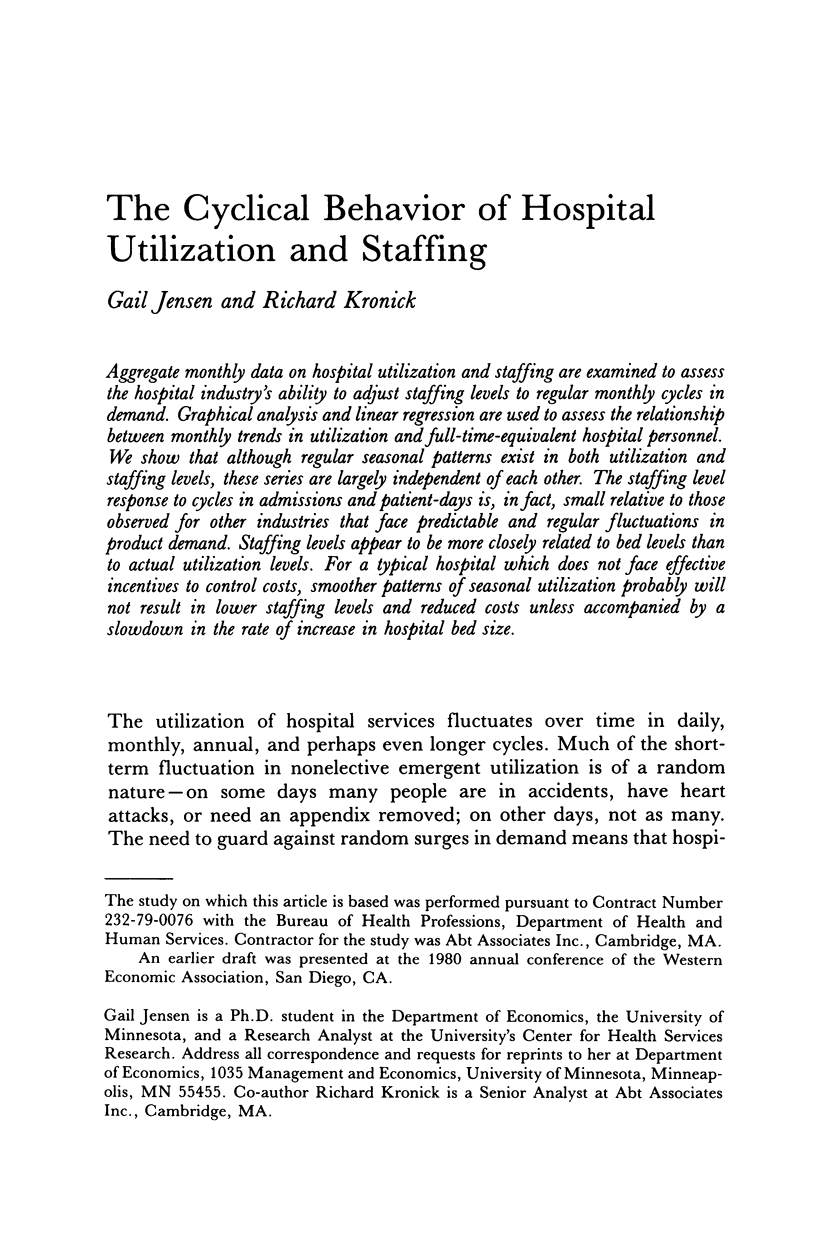
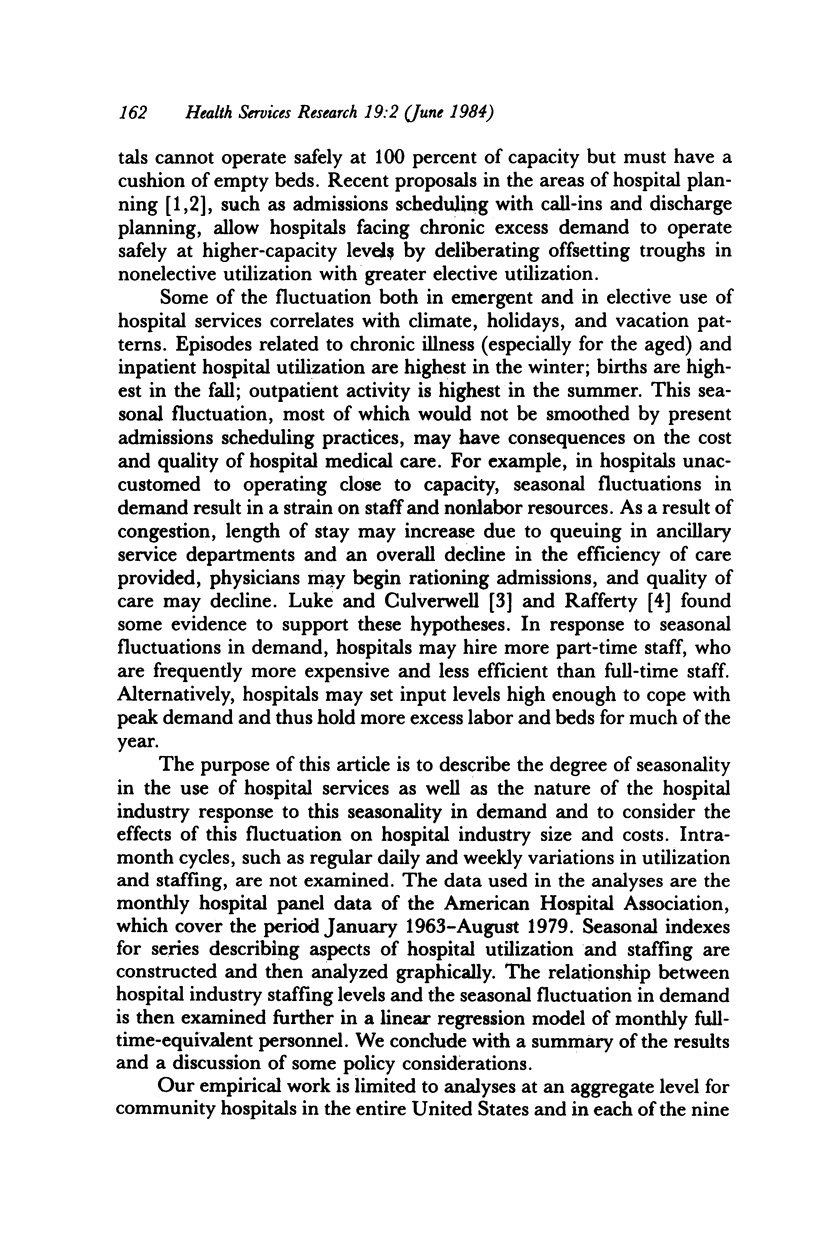
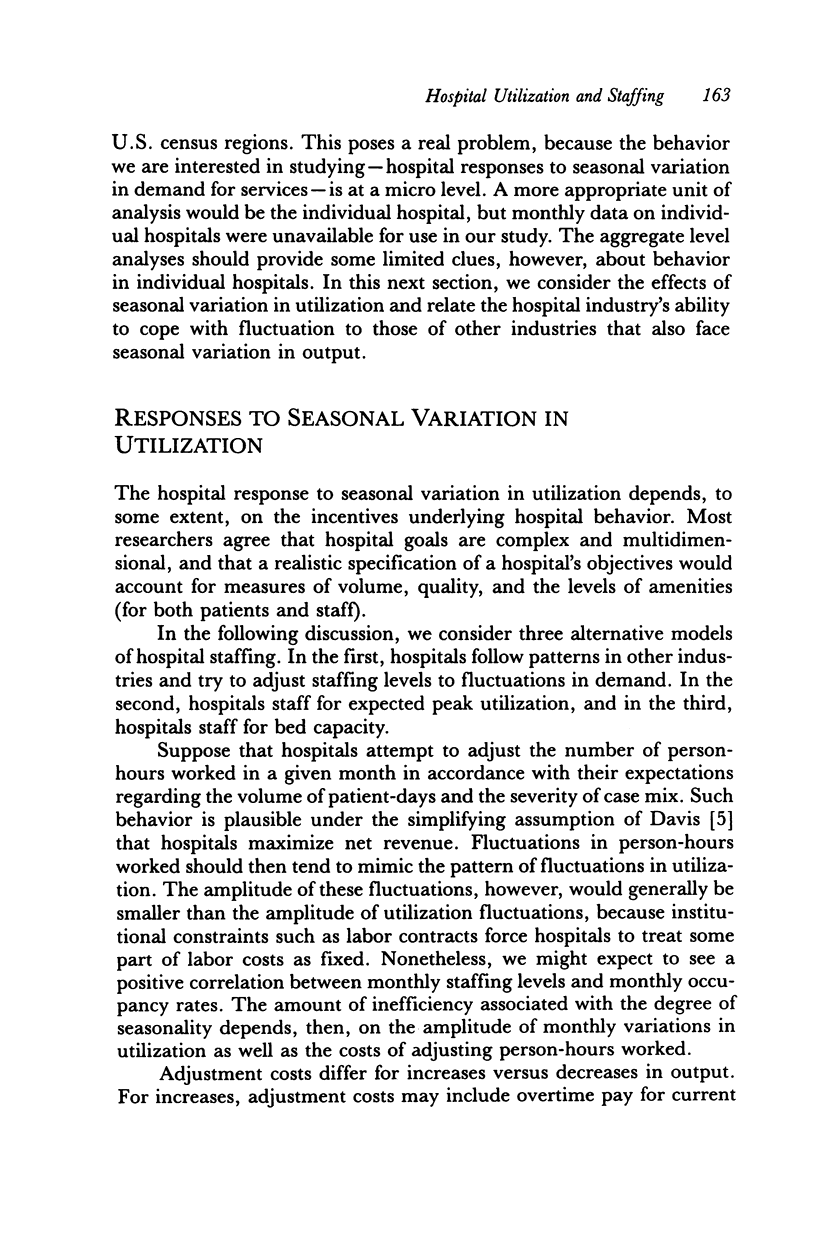
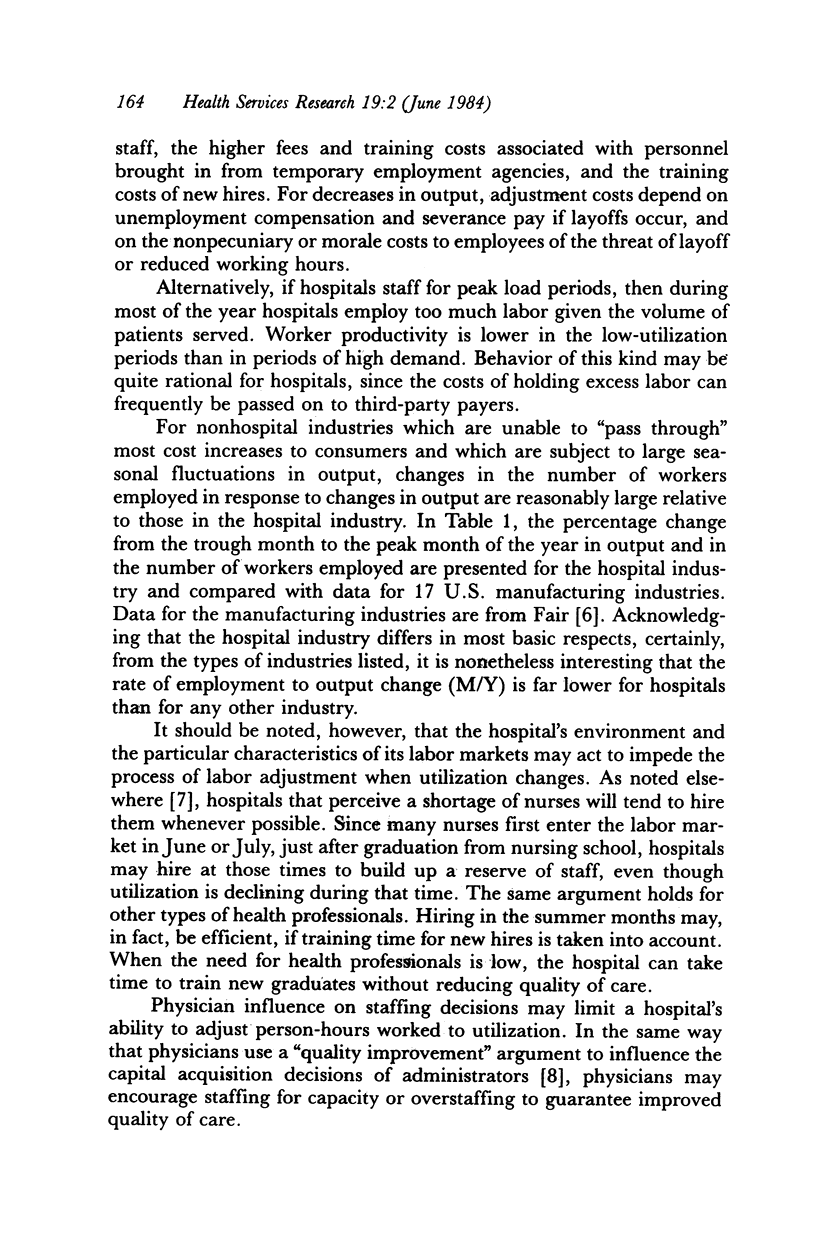
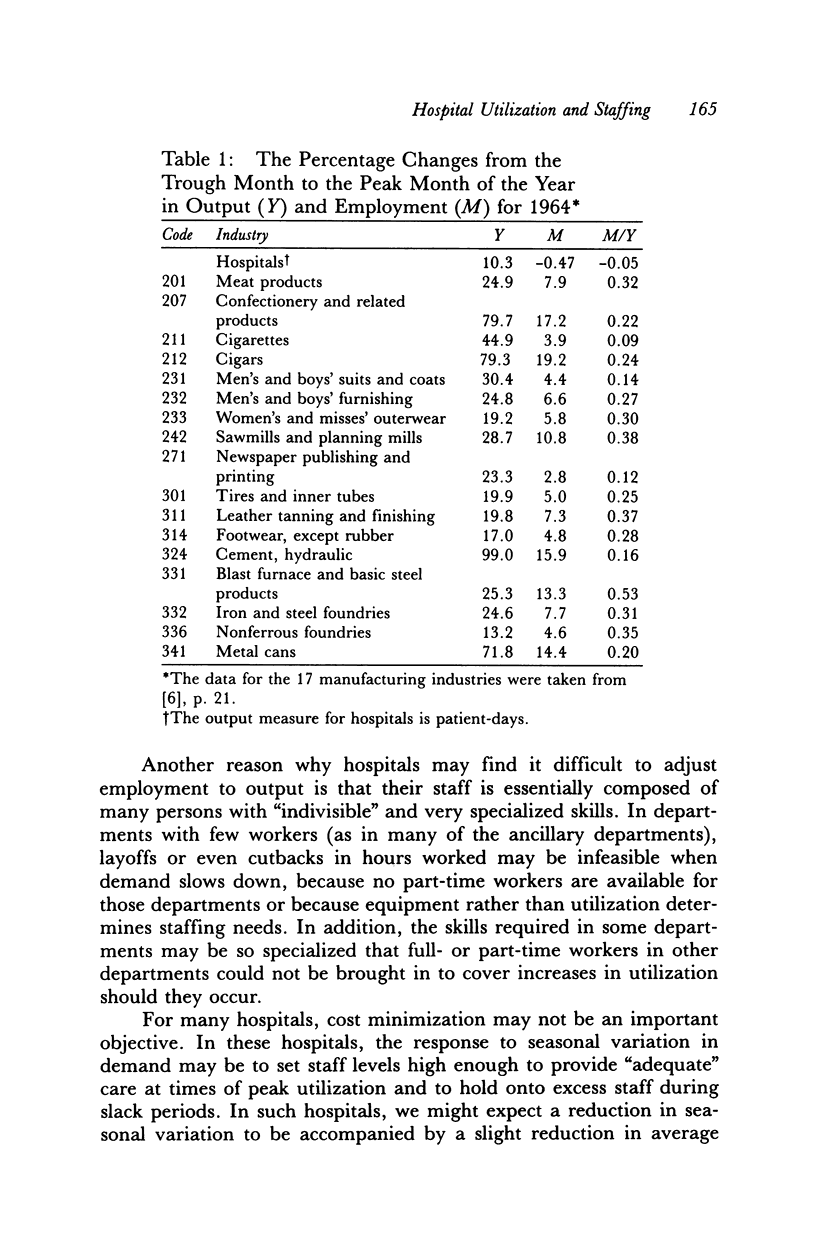
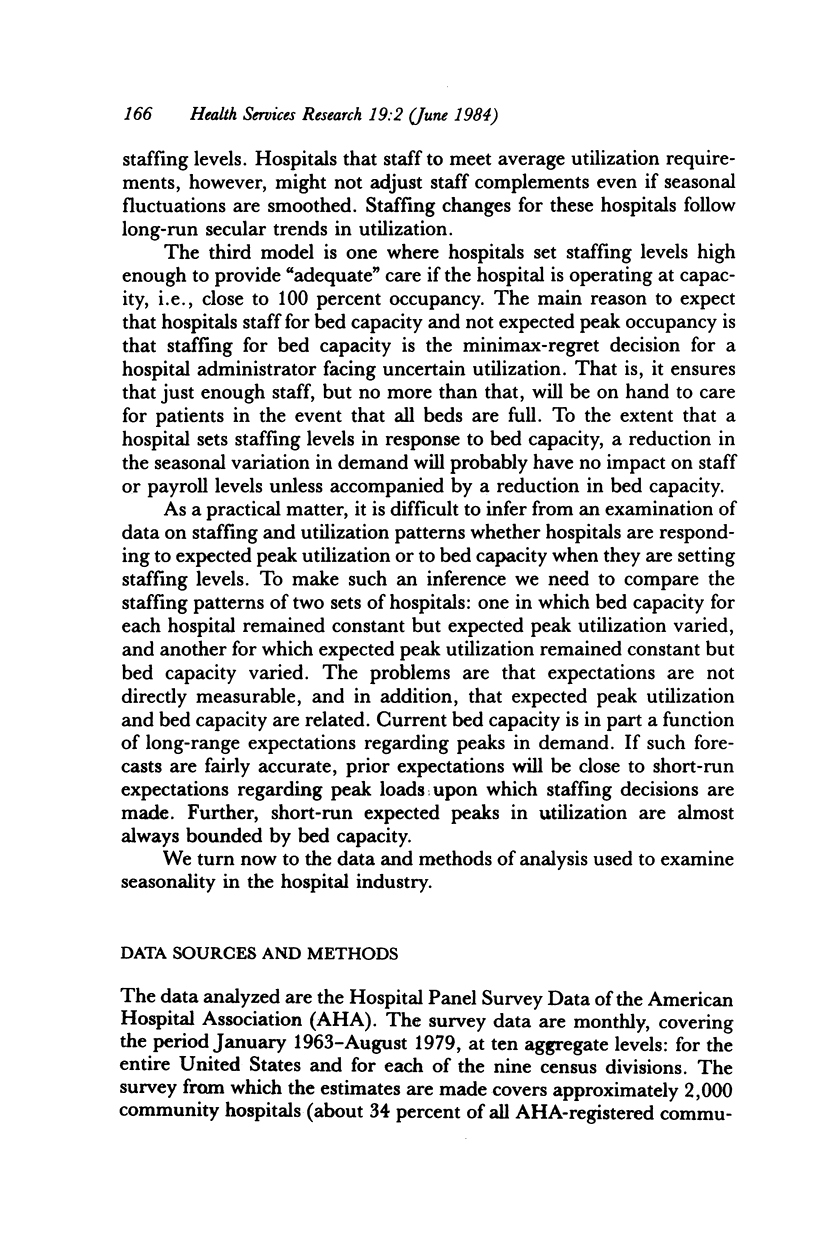
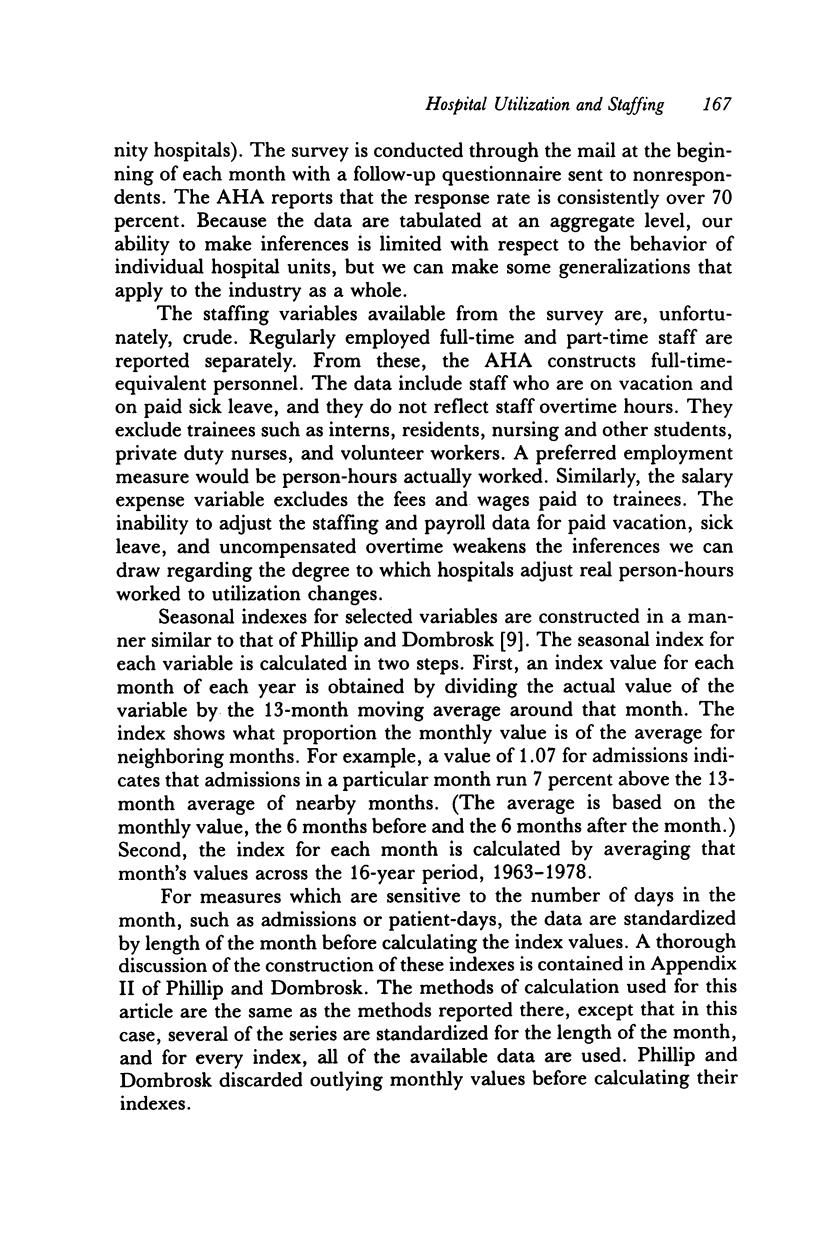
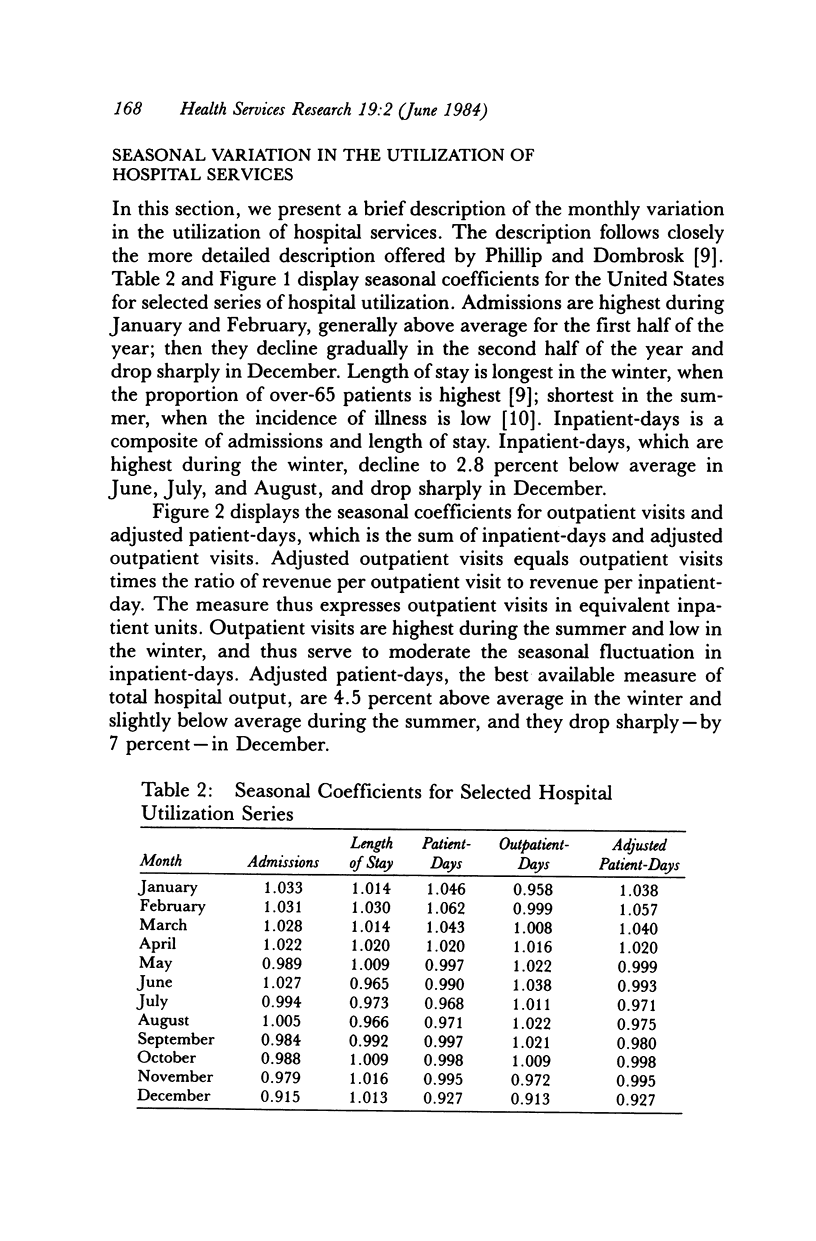
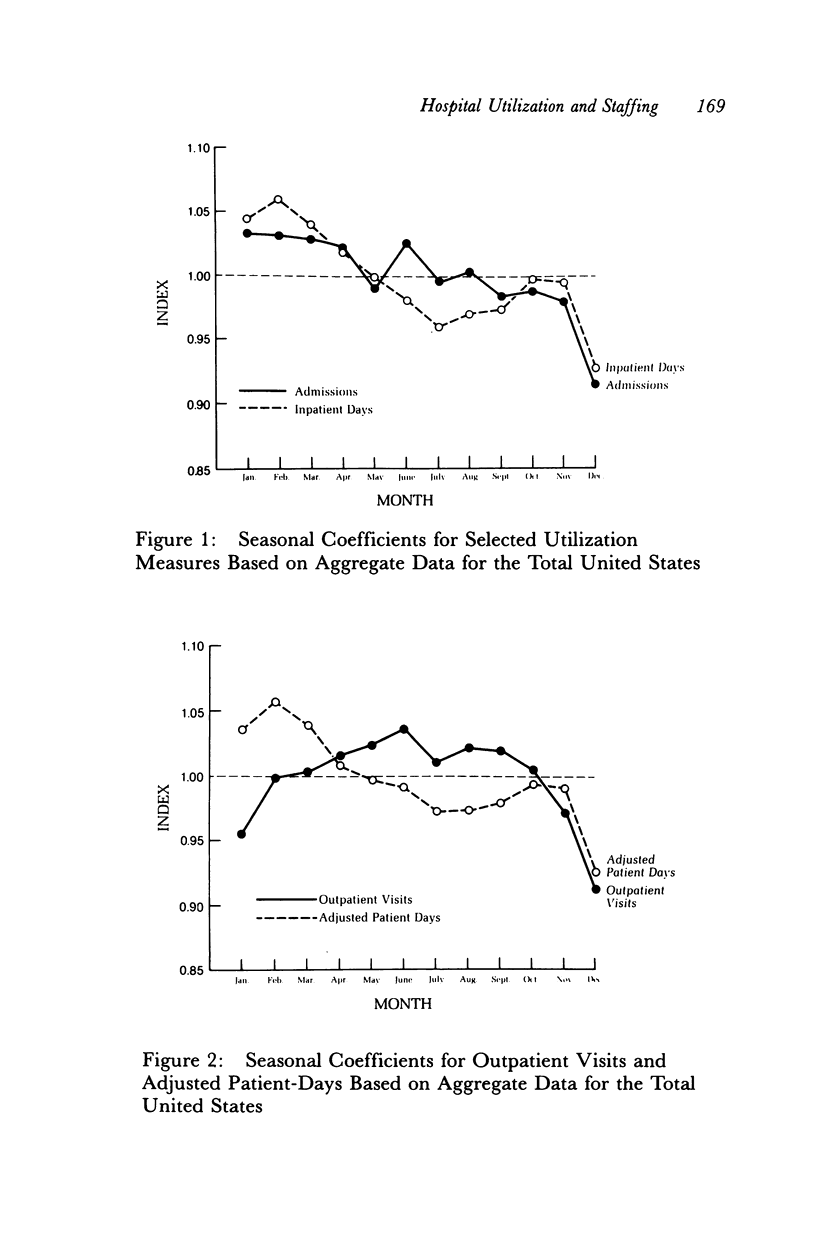
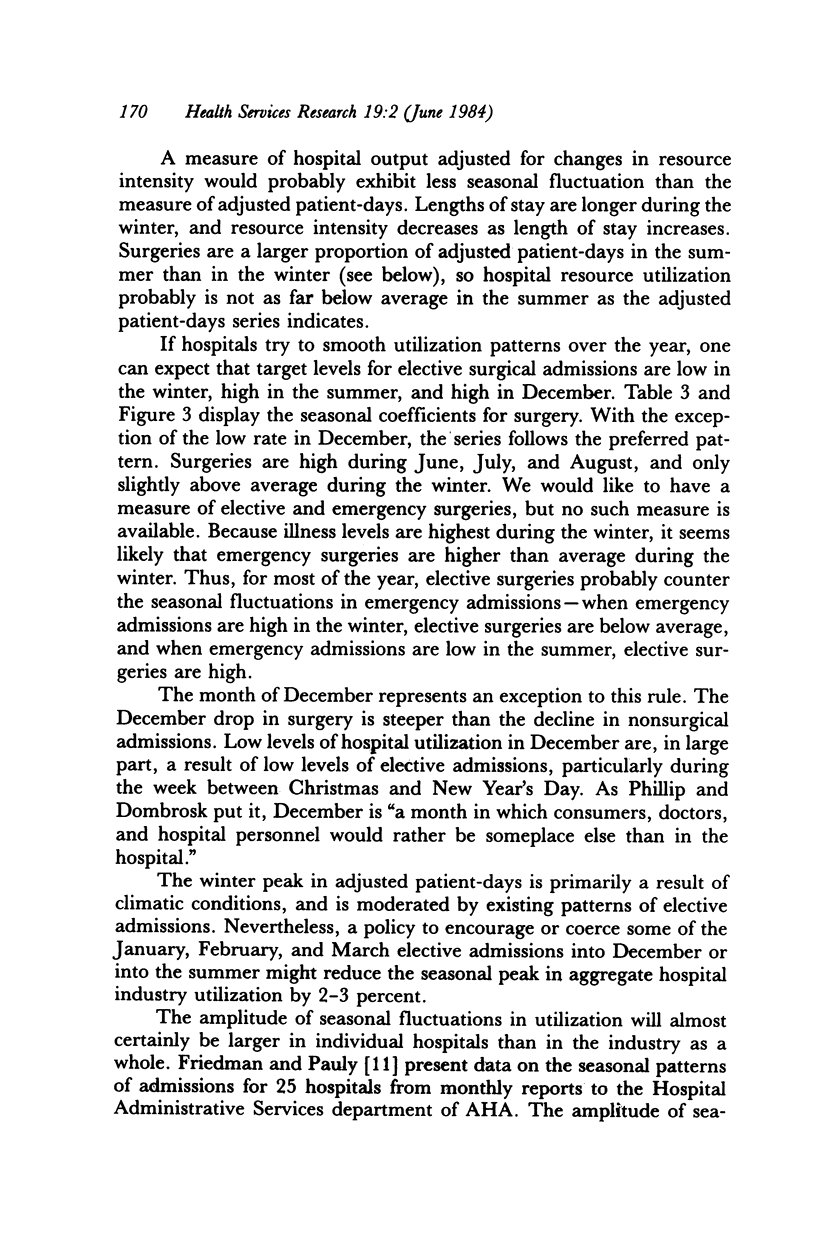
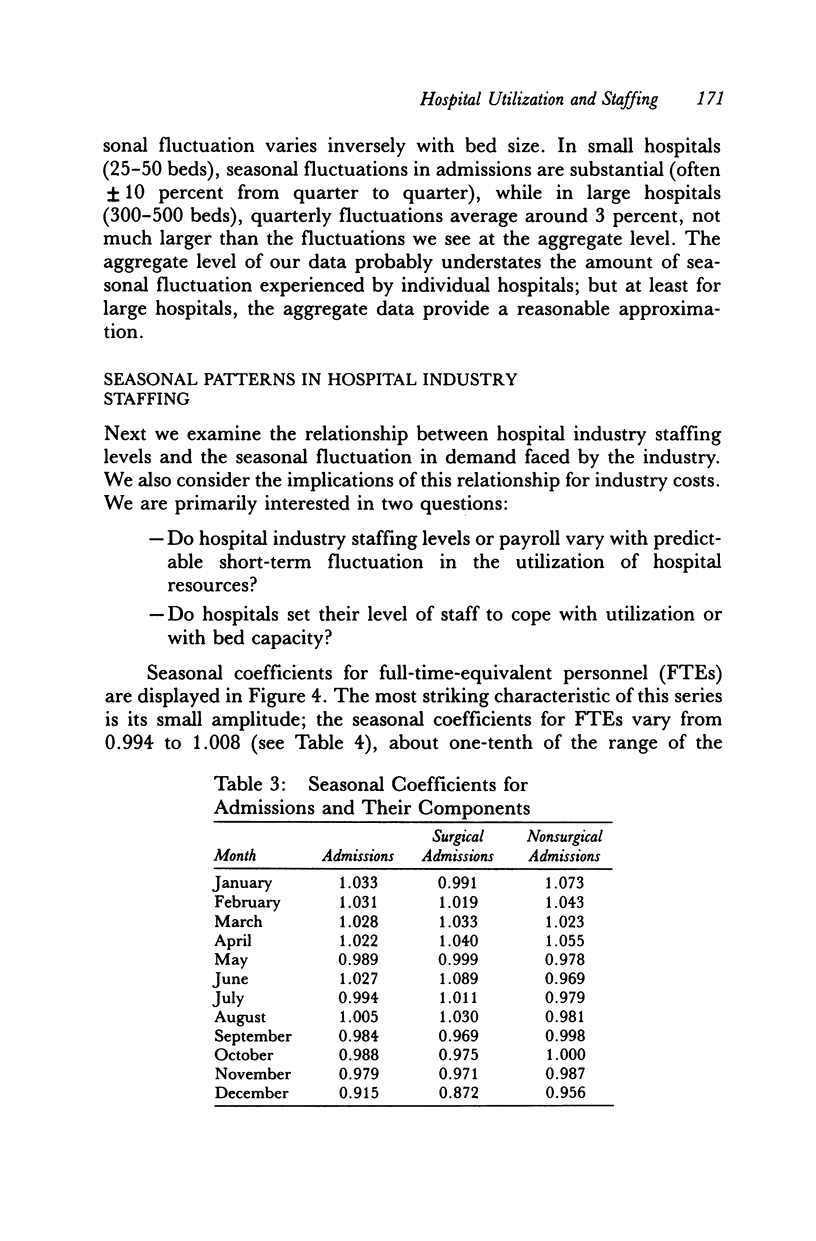
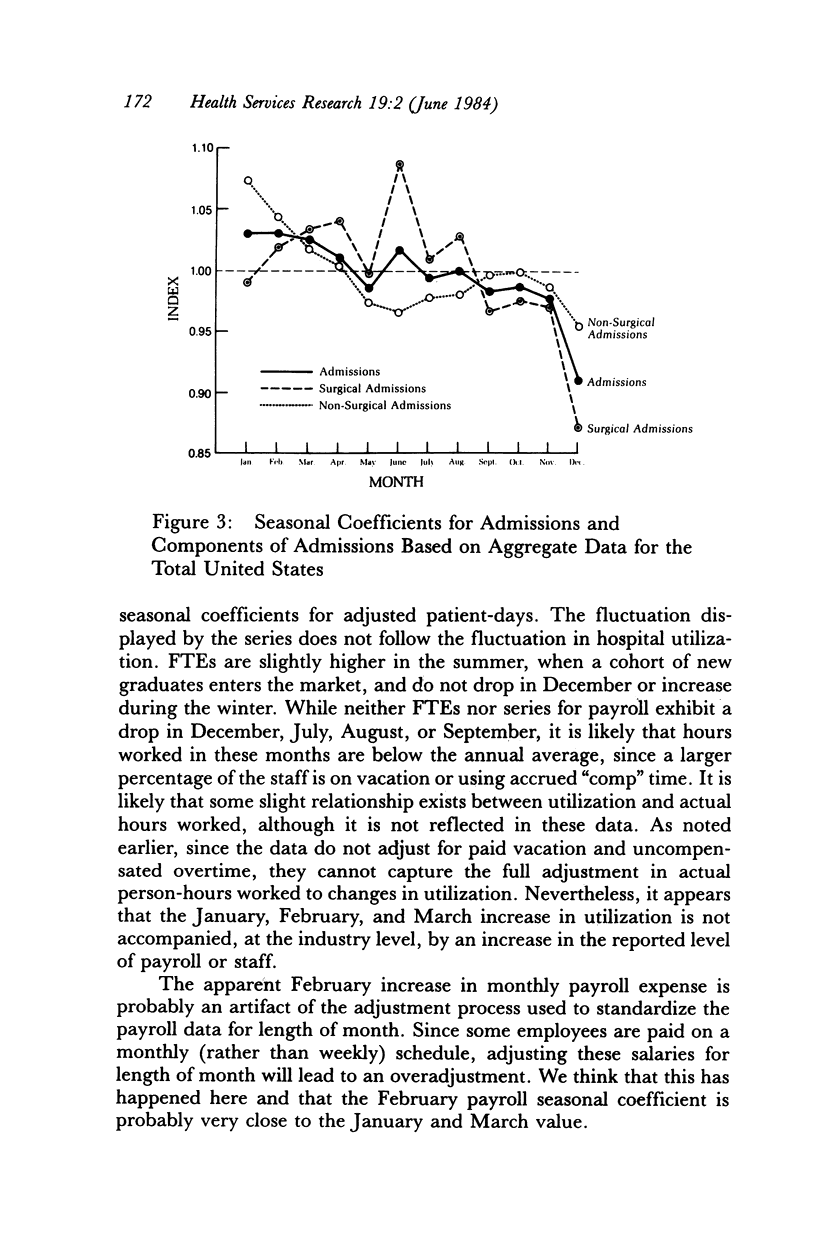
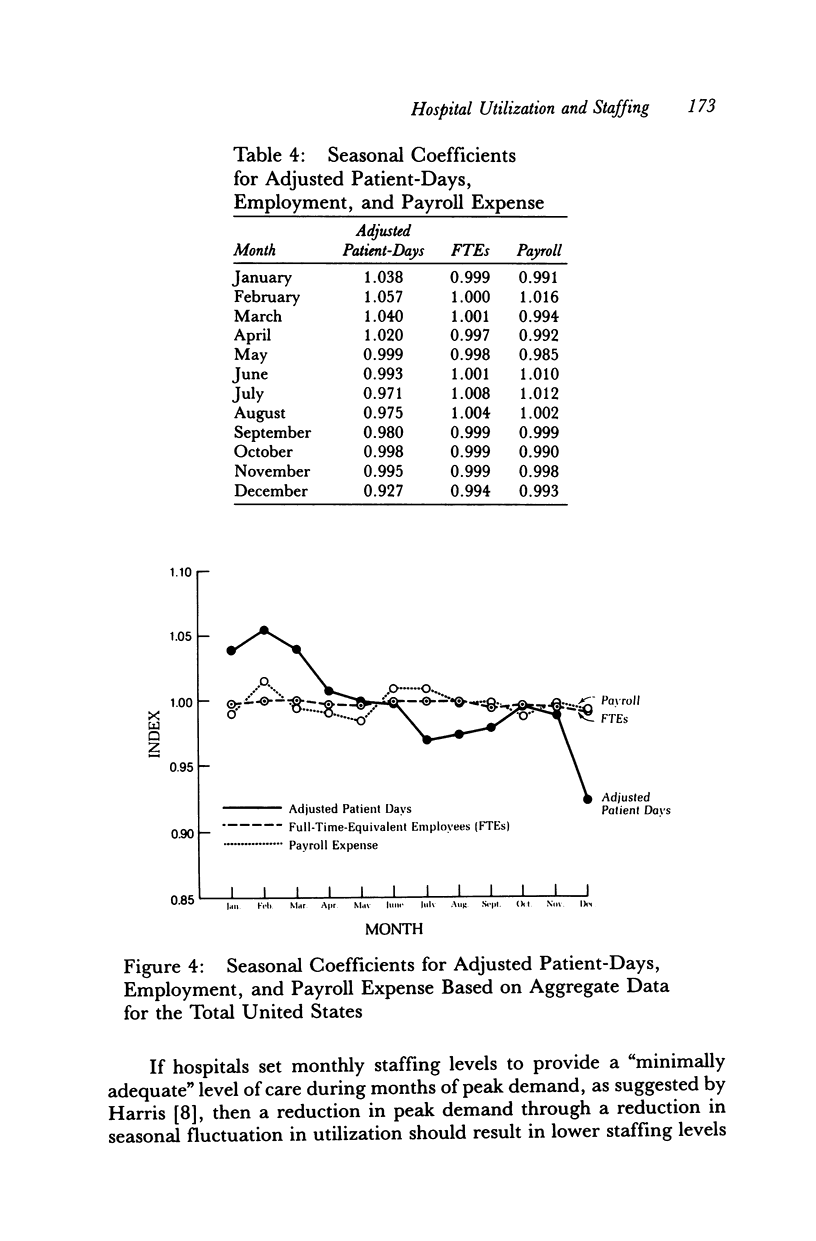
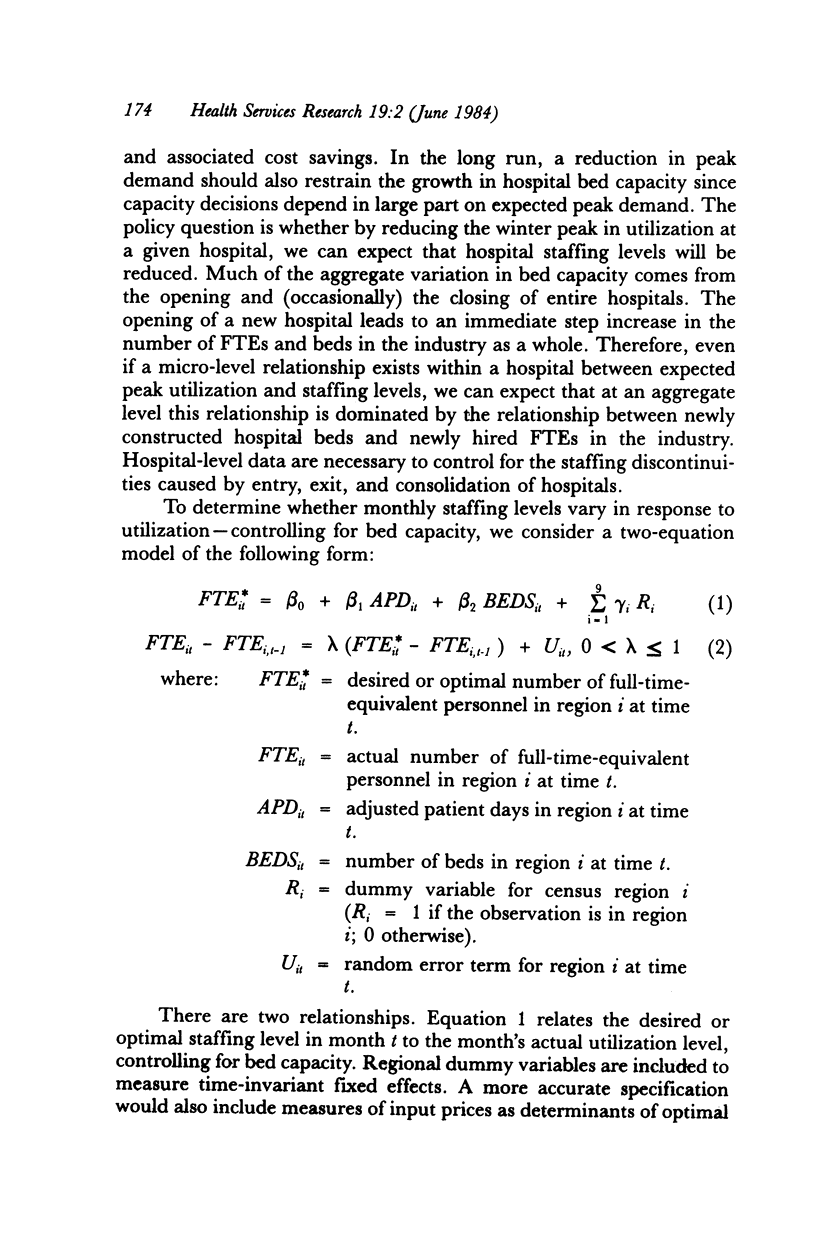

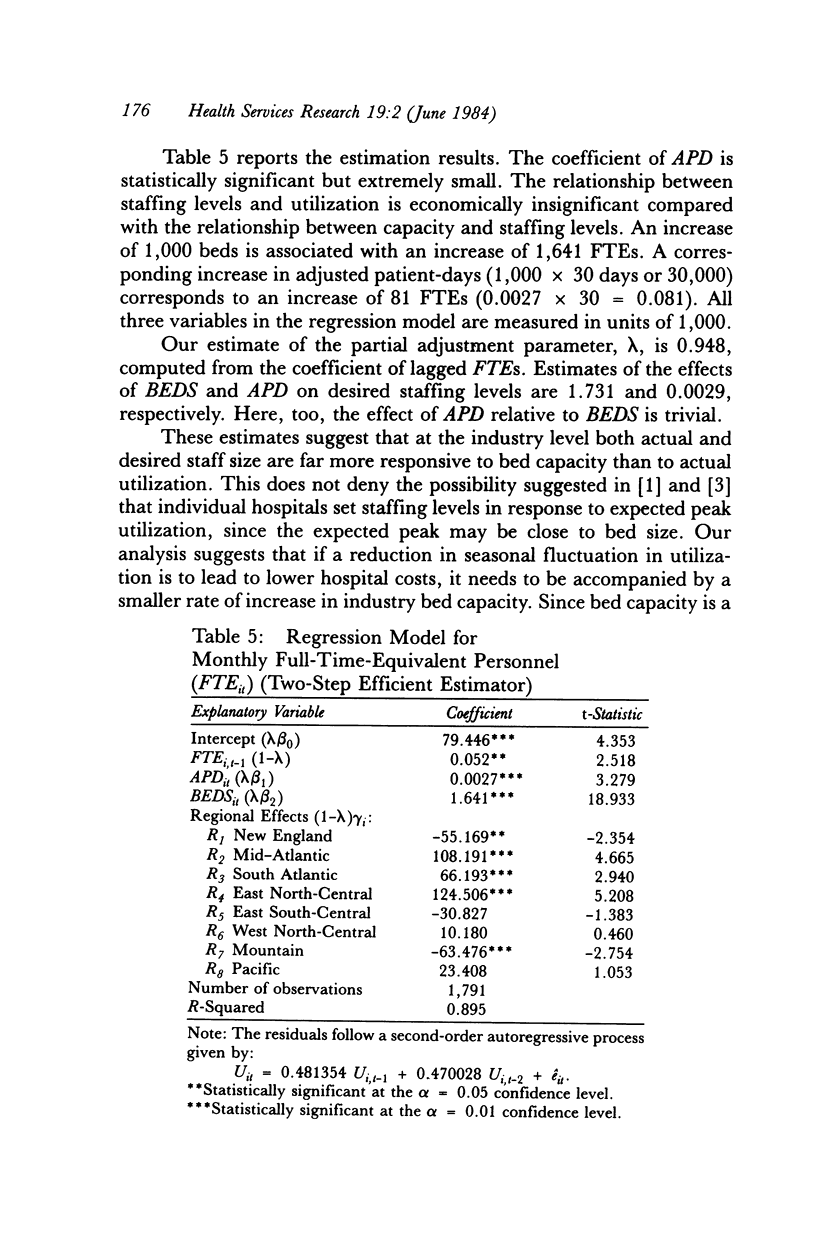
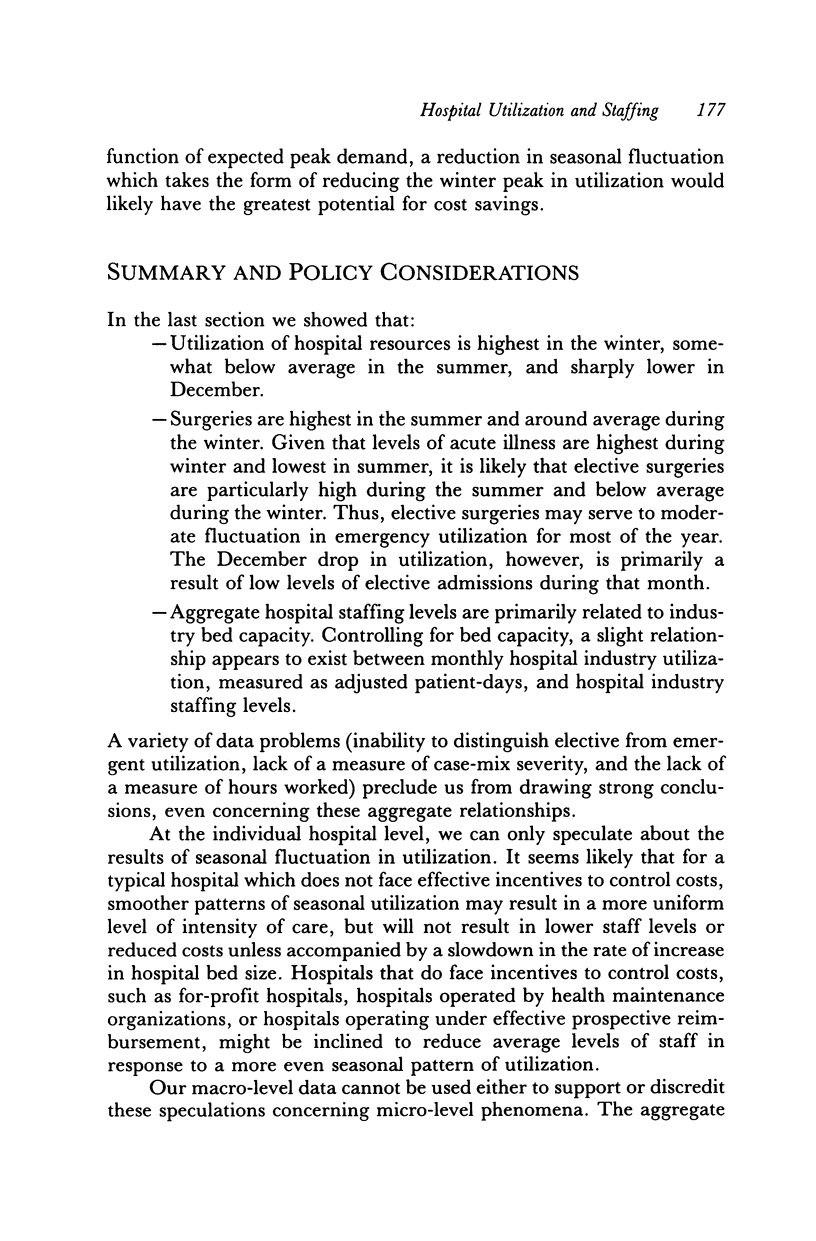
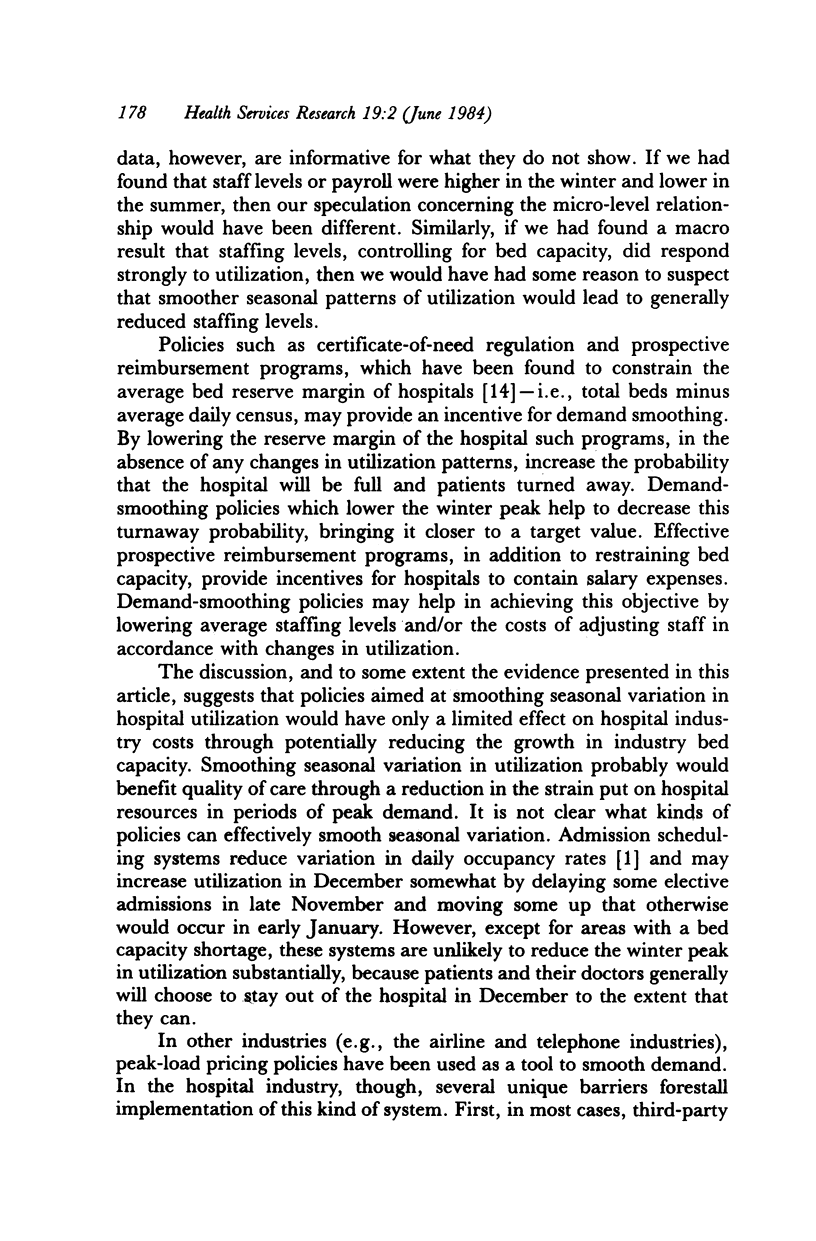
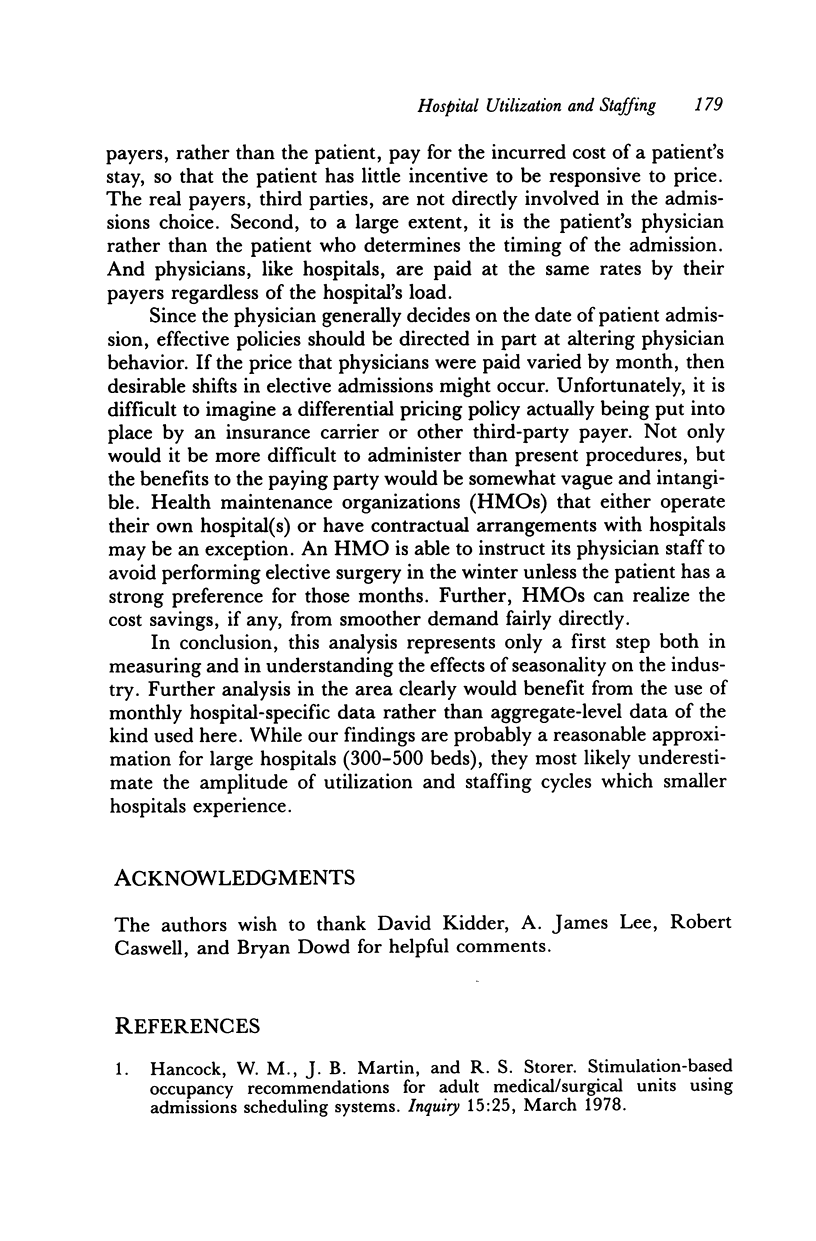
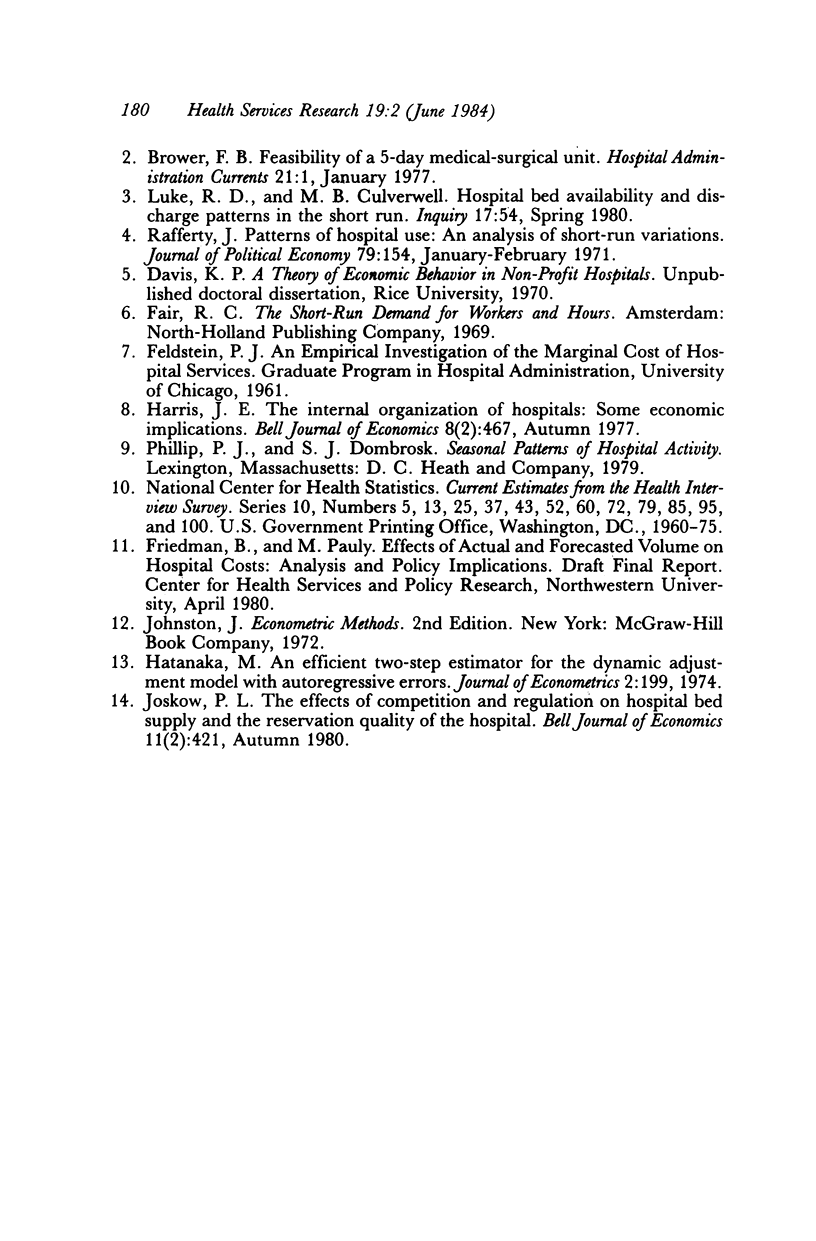
Selected References
These references are in PubMed. This may not be the complete list of references from this article.
- Brower F. B. Feasibility of a 5-day medical-surgical unit. Hosp Admin Curr. 1977 Jan-Feb;21(1):1–4. [PubMed] [Google Scholar]
- Hancock W. M., Martin J. B., Storer R. H. Simulation-based occupancy recommendations for adult medical/surgical units using admissions scheduling systems. Inquiry. 1978 Mar;15(1):25–32. [PubMed] [Google Scholar]
- Luke R. D., Culverwell M. B. Hospital bed availability and discharge patterns in the short run. Inquiry. 1980 Spring;17(1):54–61. [PubMed] [Google Scholar]


